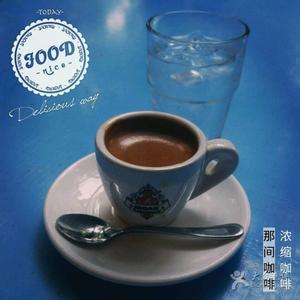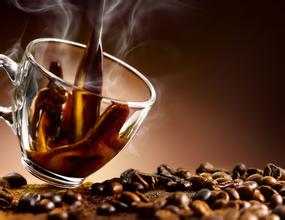Introduction to the flavor and taste characteristics of the fresh, elegant and full-grained Dominica coffee manor
Baez's regime was overthrown in 1874, but was elected president two years later and finally stepped down in 1878. General Uru's accession to power in 1882 brought stability to Dominica after years of political unrest. The political stability of the Eritrean presidency allowed many economies to breathe, and the continuous improvement of sugar industry technology caused many European and American immigrants to enter many countries in search of work. However, Aru privately used state funds for selfish purposes and set up his own imperial guard, which gradually increased the state's foreign debt. This aroused popular discontent with his actions, and after using high-handed policies to no avail, Eru was murdered in 1899. After 1902, Dominica returned to the era of multi-party separatism, and all parts of the country dominated one side, making the treasury of many countries completely empty at that time. In May 1916, President Jimenez's resignation caused President Wilson of the United States to greatly change.
Dissatisfaction. On May 15, 1916, U.S. Marines landed in Dominica. On June 1, Marines captured Monte Cristi and Puerto Plata. In early July, the United States occupied Dominica. At that time, the military government led by Rear Admiral Knapp strictly controlled the freedom of the Dominican people at that time, causing great dissatisfaction among the local middle and upper classes. In addition, the peasants in the eastern part of the country formed a continuous resistance army against the US army. Although the consciousness of resistance generally exists among the people, the military government has also quelled Dominica's unstable political state for many years. The economy of many countries has begun to grow and the foreign debt has gradually decreased. The military government has built modern roads to connect towns everywhere and established Dominica's early National Army. In February 1930, when President Horacio Vazquez wanted to run for re-election, due to fierce opposition from opponents, After secret consultations with the then commander of the National Army (formerly the National Army), President Vázquez resigned voluntarily in favour of General Rafael Leonidas Trujillo Molina, who, owing to threats of violence against other candidates, was elected President of the Dominican Republic in May 1930 without a rival. Although the Dominican economy continued to grow during Trujillo's dictatorship, most of the wealth was taken away by Trujillo and his associates. However, during this period, Dominica also developed greatly in various aspects such as medical treatment, education, transportation and port construction. Trujillo also built national housing in various places, created a national pension policy, and reached an agreement on border demarcation with Haiti in 1935. In 1941, he terminated the customs contract signed with the United States in 1906. In 1947, Dominica's foreign debt was paid off, which is still talked about by many people.
Opening the introduction of Dominican coffee, the most distinctive characteristics are fresh and elegant, full of particles, excellent acidity and pleasant aroma (two colleagues agree with this evaluation). Such flavor characteristics are not only related to varieties and planting soil quality, but also closely related to the picking and processing methods of raw beans. Dominican coffee selection adopts the most costly manual method. Workers mainly consider the fullness of coffee particles and whether they are uniform. According to these conditions, coffee beans with the most plump and uniform particles can represent the best quality and best coffee in Dominica. And only choose washing treatment method, to ensure the high quality and stability of coffee beans, water washing method of coffee beans, taste cleaner, exudes a faint fragrance pure and soft, drink to people can feel a faint fruity, lingering aftertaste, smooth smooth Dominican coffee according to the height of the planting region on different tastes are slightly different, highland planting acid, but rich taste; lowland less acid, taste is also smooth. Some Dominican estates produce high-quality coffee beans with a rich aroma, a rich taste and a moderately bright acidity, often compared to the famous Puerto Rico or Jamaica beans. The earliest coffee in Dominica was imported from Martinique, dating back to the early 18th century. Dominica is an island country with a tropical climate. The annual temperature does not change much. Except for the middle Cordillera mountain area, where the temperature is relatively low and can reach below 0℃ in winter, the annual average temperature in other areas is between 25 and 30℃. However, due to the influence of mountain terrain, the north and east face the northeast trade wind, and the annual precipitation reaches 1500-2500 mm. It belongs to a tropical marine climate. Mountain forest dense, leeward southwest annual precipitation of 500-1000 mm, longer dry season, tropical savanna climate Dominica mild climate conducive to coffee cultivation, coffee cultivation is the best production in the southwest of Barahona (Barahona) region and the Dominican second largest city Santiago north of the West Baou (Cibao) valley. The northern region, represented by Ciba, and the southern region, including Ocayabani Santo Domingo, produce fine coffee. Among them, Santo Domingo and Bani produced coffee world-famous, almost synonymous with Domica coffee

Important Notice :
前街咖啡 FrontStreet Coffee has moved to new addredd:
FrontStreet Coffee Address: 315,Donghua East Road,GuangZhou
Tel:020 38364473
- Prev

Introduction to the characteristics of Puerto Rican Coffee Flavor Manor with Pure, aromatic and heavy granule
In 1898, the Spanish-American War broke out and Spain was defeated. According to the Treaty of Paris, Puerto Rico was ceded to the United States. The administrative jurisdiction of the United States over Puerto Rico first took the form of a military junta. During its two years of governance of the island, the junta established schools, roads, railways, hospitals and health facilities. In 1900, the United States Congress established civilian control over the island. The Governor, the Cabinet and
- Next

Introduction to Ethiopian Sidamo Chiso Coffee Flavor Manor with citrus aroma
Ethiopia is rectangular, with a ratio of length to width of 3:2. From top to bottom, it is composed of green, yellow and red parallel equal horizontal rectangles, with the national emblem in the middle of the flag. Since the end of the 19th century, Ethiopia began to use the green, yellow and red cross-striped national flag. In modern history, Ethiopia is the first African country to join the forest of free nations. [8] to this century
Related
- Detailed explanation of Jadeite planting Land in Panamanian Jadeite Manor introduction to the grading system of Jadeite competitive bidding, Red bid, Green bid and Rose Summer
- Story of Coffee planting in Brenka region of Costa Rica Stonehenge Manor anaerobic heavy honey treatment of flavor mouth
- What's on the barrel of Blue Mountain Coffee beans?
- Can American coffee also pull flowers? How to use hot American style to pull out a good-looking pattern?
- Can you make a cold extract with coffee beans? What is the right proportion for cold-extracted coffee formula?
- Indonesian PWN Gold Mandrine Coffee Origin Features Flavor How to Chong? Mandolin coffee is American.
- A brief introduction to the flavor characteristics of Brazilian yellow bourbon coffee beans
- What is the effect of different water quality on the flavor of cold-extracted coffee? What kind of water is best for brewing coffee?
- Why do you think of Rose Summer whenever you mention Panamanian coffee?
- Introduction to the characteristics of authentic blue mountain coffee bean producing areas? What is the CIB Coffee Authority in Jamaica?

